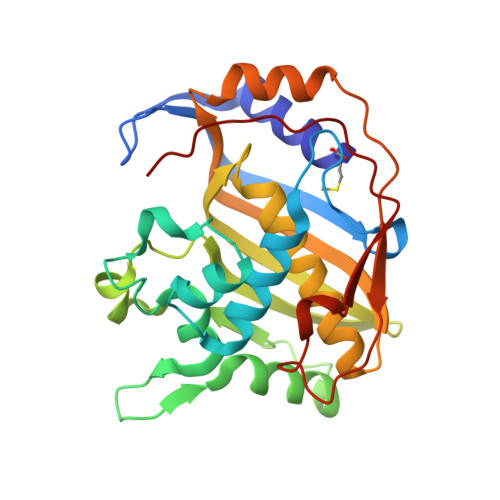Caught in Action: X-ray Structure of Thymidylate Synthase with Noncovalent Intermediate Analog.
Kholodar, S.A., Finer-Moore, J.S., Swiderek, K., Arafet, K., Moliner, V., Stroud, R.M., Kohen, A.(2021) Biochemistry 60: 1243-1247
- PubMed: 33829766
- DOI: https://doi.org/10.1021/acs.biochem.1c00063
- Primary Citation of Related Structures:
7JX1, 7JXF - PubMed Abstract:
Methylation of 2-deoxyuridine-5'-monophosphate (dUMP) at the C5 position by the obligate dimeric thymidylate synthase (TSase) in the sole de novo biosynthetic pathway to thymidine 5'-monophosphate (dTMP) proceeds by forming a covalent ternary complex with dUMP and cosubstrate 5,10-methylenetetrahydrofolate. The crystal structure of an analog of this intermediate gives important mechanistic insights but does not explain the half-of-the-sites activity of the enzyme. Recent experiments showed that the C5 proton and the catalytic Cys are eliminated in a concerted manner from the covalent ternary complex to produce a noncovalent bisubstrate intermediate. Here, we report the crystal structure of TSase with a close synthetic analog of this intermediate in which it has partially reacted with the enzyme but in only one protomer, consistent with the half-of-the-sites activity of this enzyme. Quantum mechanics/molecular mechanics simulations confirmed that the analog could undergo catalysis. The crystal structure shows a new water 2.9 Å from the critical C5 of the dUMP moiety, which in conjunction with other residues in the network, may be the elusive general base that abstracts the C5 proton of dUMP during the reaction.
Organizational Affiliation:
Department of Chemistry, The University of Iowa, Iowa City, Iowa 52242, United States.



















